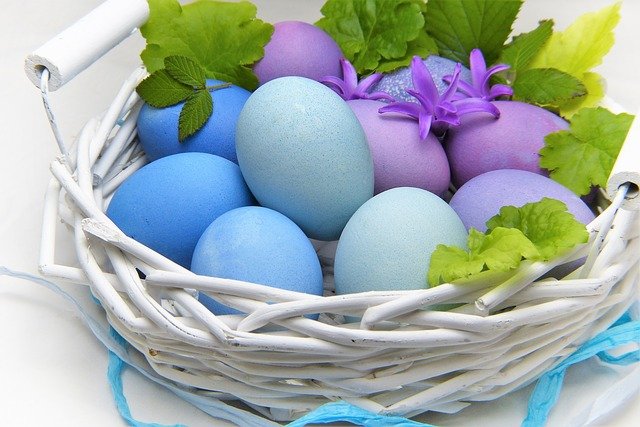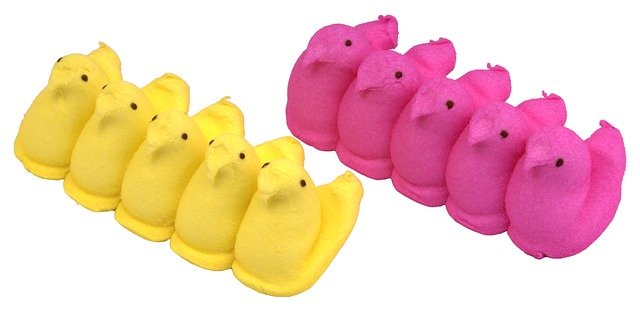An Easter egg chemistry challenge from Science Buddies
Read:
https://www.scientificamerican.com/article/bring-science-home-silk-egg-dyeing/
Glossary
- dazzling – extremely impressive, beautiful, or skilful
- tongs – a tool with two long parts that are joined at one end, used for picking up and holding things
- slotted spoon – a large spoon with slots for straining food
- seam – the joining of two pieces (as of cloth or leather) by sewing usually near the edge
- to simmer – to stew gently below or just at the boiling point
Replace the words in bold in the article with their synonyms below:
tags dip purchased investigate dazzling
wrapped in soaked common detailed
Have you ever dyed eggs? Turning eggshells from white into different, 1. brilliant colors can be a lot of fun! Many people do this around Easter time using dye tablets to make different colors in liquid form. They then 2. immerse the egg into the liquid and wait until it turns the desired color. Eggs can be dyed in many other ways, and one neat method uses silk ties. Sounds strange to use clothing to dye eggs, right? But it actually works really well! In this activity you’ll dye eggs with silk ties and 3. explore whether heat is needed for the process to work well. Aren’t you just dye-ing to try this out?
People have been dyeing eggs long before the 4. typical store-bought tablet coloring existed. Over the years people have explored many other ways to do it, such as by using dyes from plants and spices or by using completely different methods. One way you can dye eggs is using old, 100 percent silk neckties. To dye an egg using silk ties, the egg is 5. enveloped by the tie, and they are placed in water with vinegar. When the process is done, some of the dye from the tie transfers to the eggshell. Ideally, it dyes the eggshell so that it looks similar to the tie, with some 6. elaborate designs being clearly visible on the eggshell.
Silk is generally dyed using a specific group of dyes known as acid dyes, which color objects by chemically reacting with proteins in them (such as the silk fibers in the ties with eggshell proteins). For the chemical reaction to work (that is, change an object’s color), this type of dye needs acids around. Thus, the eggs are 7. sunk in vinegar (an acid) during the dyeing process to help the acid dyes transfer their color from the silk ties to the eggshells.
Materials
• All-silk necktie. Look at the 8. labels on the back of the tie to make sure it is 100 percent. Darker blues, purples and reds transfer dye the best. These ties can usually be 9. bought inexpensively at a secondhand shop or thrift store. (Be sure to ask permission before using someone’s silk tie for this activity—the ties will be destroyed in the process of dying!)
• Scissors
• Two raw white eggs
• Four twist ties, etc. (…)
Key: 1. dazzling; 2. dip 3. investigate; 4. common; 5. wrapped; 6. detailed; 7. soaked; 8. tags; 9. purchased
Practice Makes Perfect
Watch the video and answer the questions below:
- Why did Romans bring chickens on their military campaigns?
- What made these birds easy to capture and contain?
- What were the earliest domesticated chickens bred for?
- When and where did eggs become a common meal rather than a royal delicacy or religious offering?
- What was the chicken considered a symbol for (in the 7th century)?
- What was the phenomenon ”Hen Fever” or ”The Fancy” about?
- Whose attention did the phenonmenon catch?
- What was the Punnett Square used to show?
- How many various roles have chickens played over the centuries?
Discuss
- What springs to mind when you think of Easter?
- How is Easter celebrated in your country?
- Have you ever spent Easter in another country? Would you like to?
- Is there anything you dislike about Easter?
- What is the meaning of Ash Wednesday, Good Friday and Holy Saturday?
- Do you prefer Easter or Christmas?
Explore it more to create your own teaching-learning experience!
How a ‘Horrendous’ Candy That So Many People Hate Became a Best-Selling Easter Treat (Year After Year After Year)
Read:
(2748)






